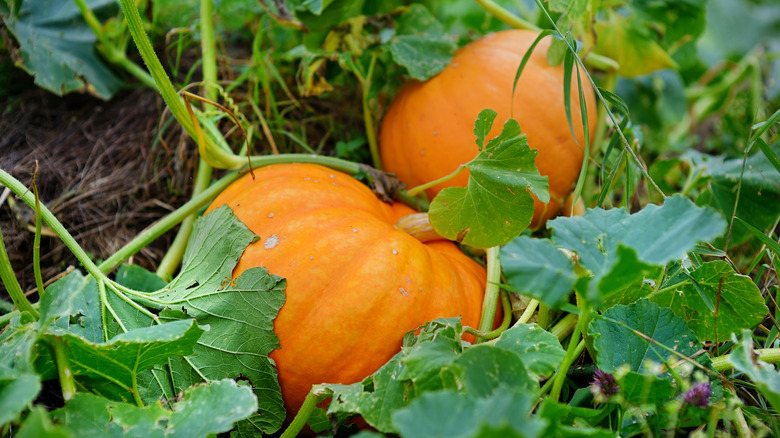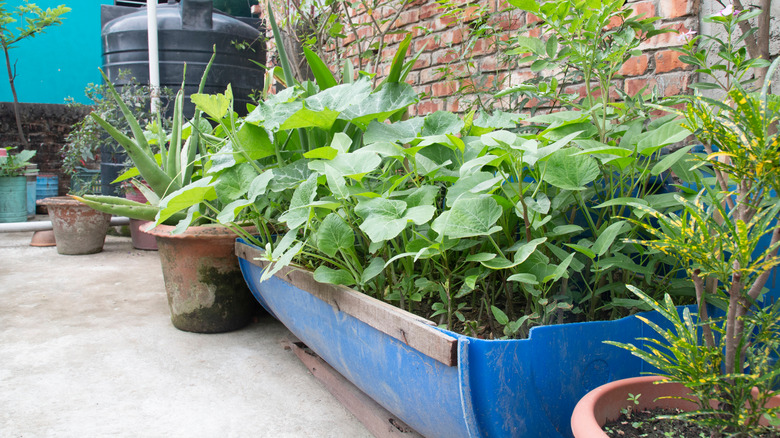Are Pumpkins A Good Choice For Container Gardening?
Anyone who's visited a fall pumpkin patch knows how far those pretty yet chaotic vines sprawl. Then there are the pumpkins themselves. The standard pie pumpkin weighs around 5 to 10 pounds; that shoots up to well over 2,000 pounds for record-breaking giant fruit. It's almost impossible to imagine these big plants adapting to container gardening. So, are pumpkins an option for those who garden in pots? The short answer is yes! The longer answer? You need a sunny enough spot in your yard or on your balcony, the right-sized container, and a petite pumpkin variety.
If you're a container gardener, you likely have limited growing space. Survey your planting area to see if it's suitable for pumpkins. A spot with at least six hours but ideally eight hours of full sun daily will ensure an abundant crop. You'll also need clear space around the pot or room to add a trellis. Even smaller pumpkin vines stretch out 2 to 3 feet. (Due to the space requirements, growing pumpkins indoors isn't recommended.) You'll have the best success growing "dwarf" or "patio" varieties — those terms indicate a plant has been cultivated for small spaces or containers. Some varieties popular in the U.S. include Cinnamon Girl; Baby Bear, Boo, and Pam; Munchkin; Hooligan; Spooktacular; Jack and Wee Be Little; Small Sugar and Sugar Pie; Spacemaster; and Bushkin.
Pot size and planting
Your most significant consideration after choosing a pumpkin variety is the size of your container. Expert advice varies, but the smallest volume you'll get away with appears to be 5 gallons. From there, sizes range from a minimum of 10 gallons right up to 25 gallons. Some wilder suggestions include a children's plastic wading pool, a half-barrel, or a potato grow bag. Really, any large container with drainage holes will do, as pumpkin vines dislike wet feet. Dark-colored containers work better than light — they retain the heat so beloved by growing pumpkins. Terra cotta and plastic are popular material choices due to their longevity.
What is the best time of year to plant pumpkins? It's late spring once any chance of frost has receded. Fill your pot with a good quality, well-draining potting mix — pumpkins prefer a pH of 5.5 to 7.5 — and add a handful of compost once your seedling is established. Keeping cucurbits well-fed is the secret to growing big, healthy pumpkins, especially when confined to a pot. Add some stakes or position the planter against a trellis to give the vine something to climb on. Alternatively, if you have the room, it's okay to let the tendrils spill over the pot and run along the ground. Be vigilant about watering — pumpkins like consistent water and lots of it. Cover your planter with garden fabric to deter insect pests. Just remember to remove the fabric before the plant flowers so insects can pollinate them.

